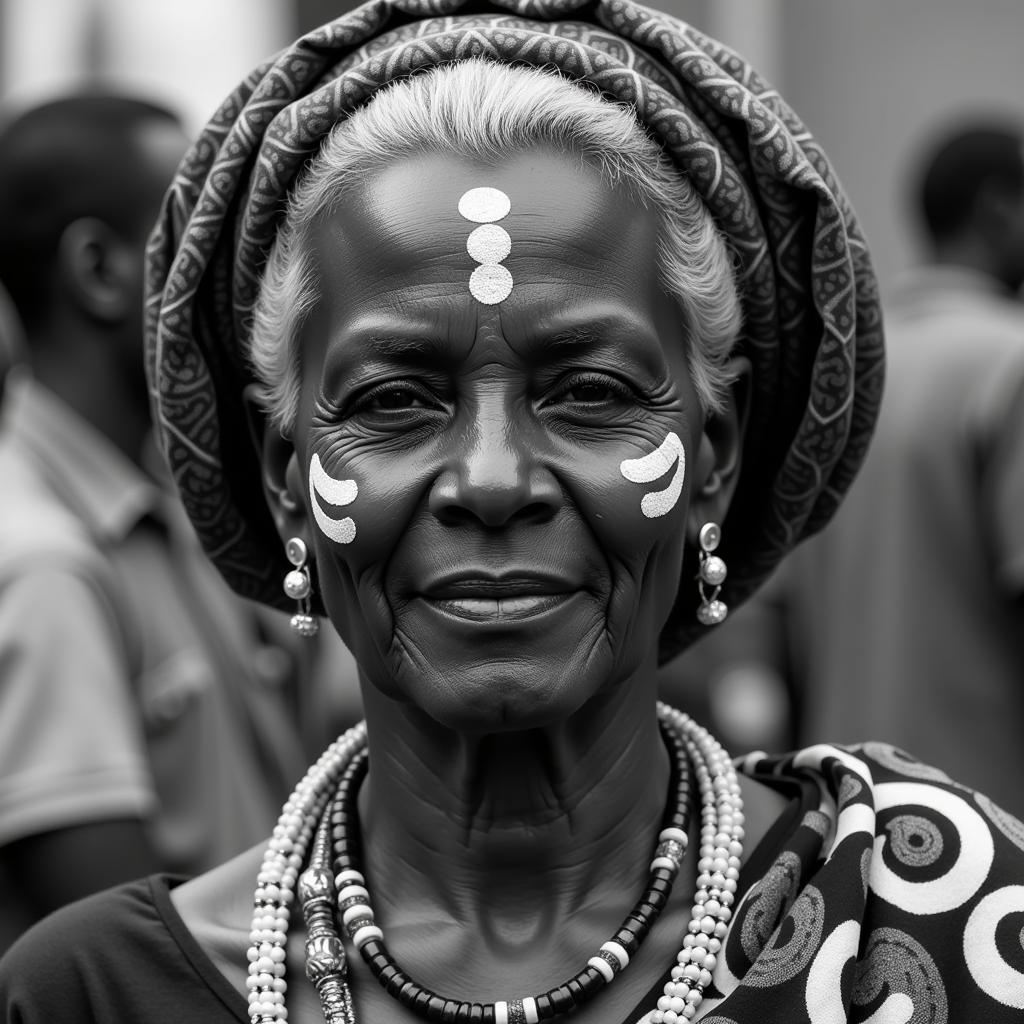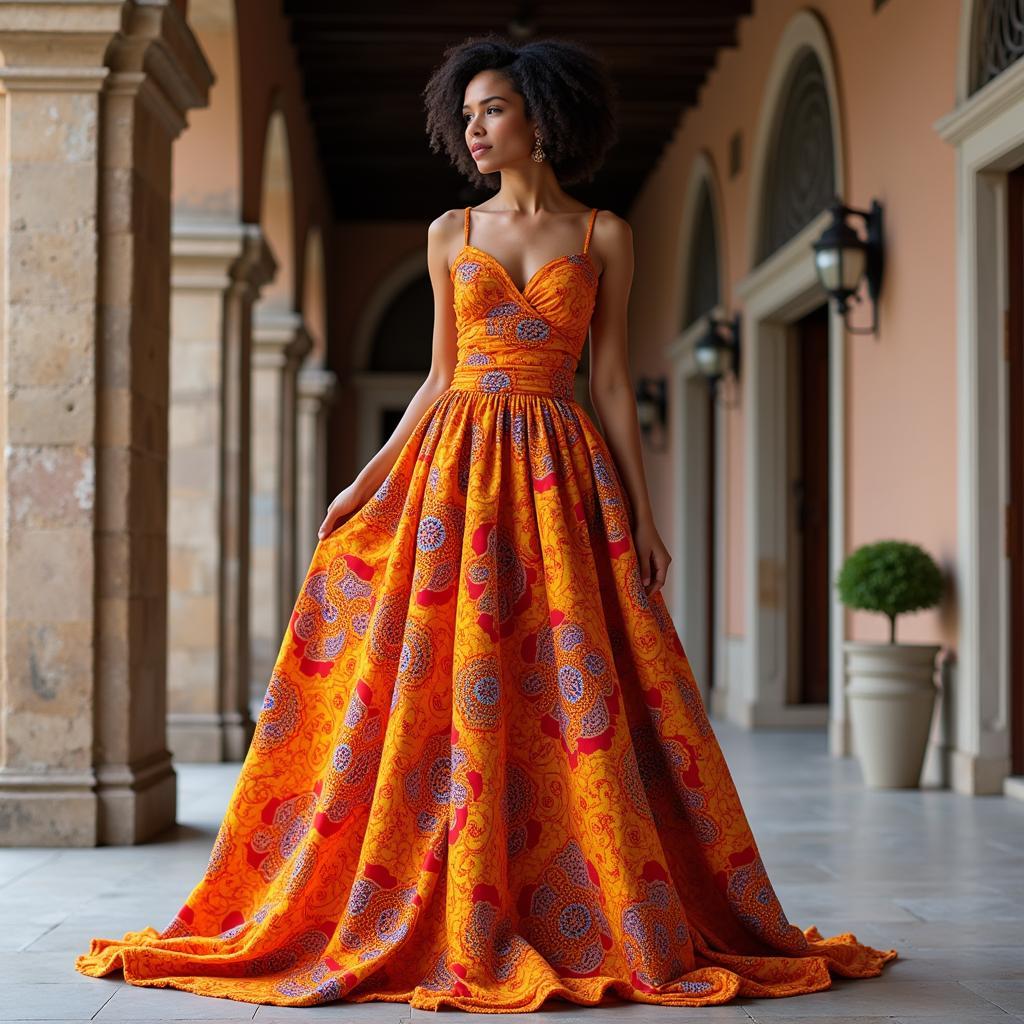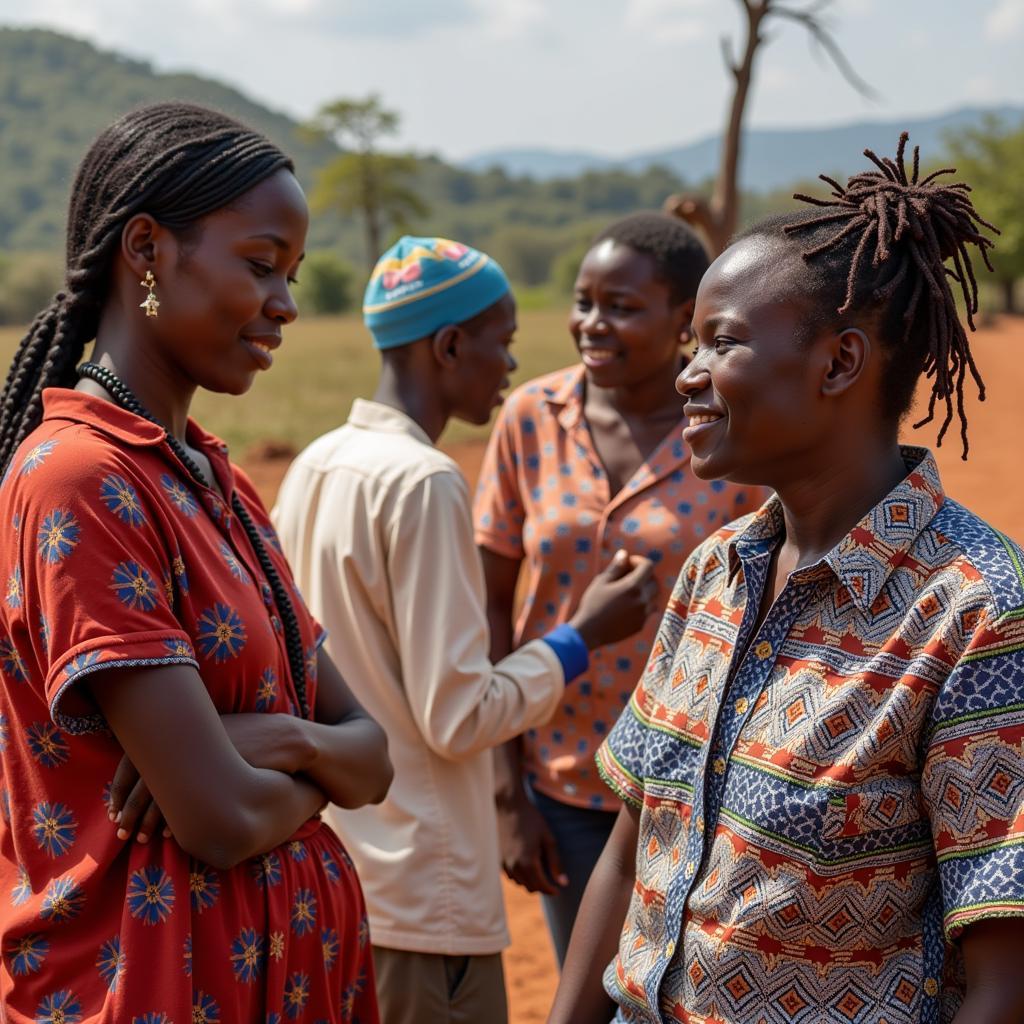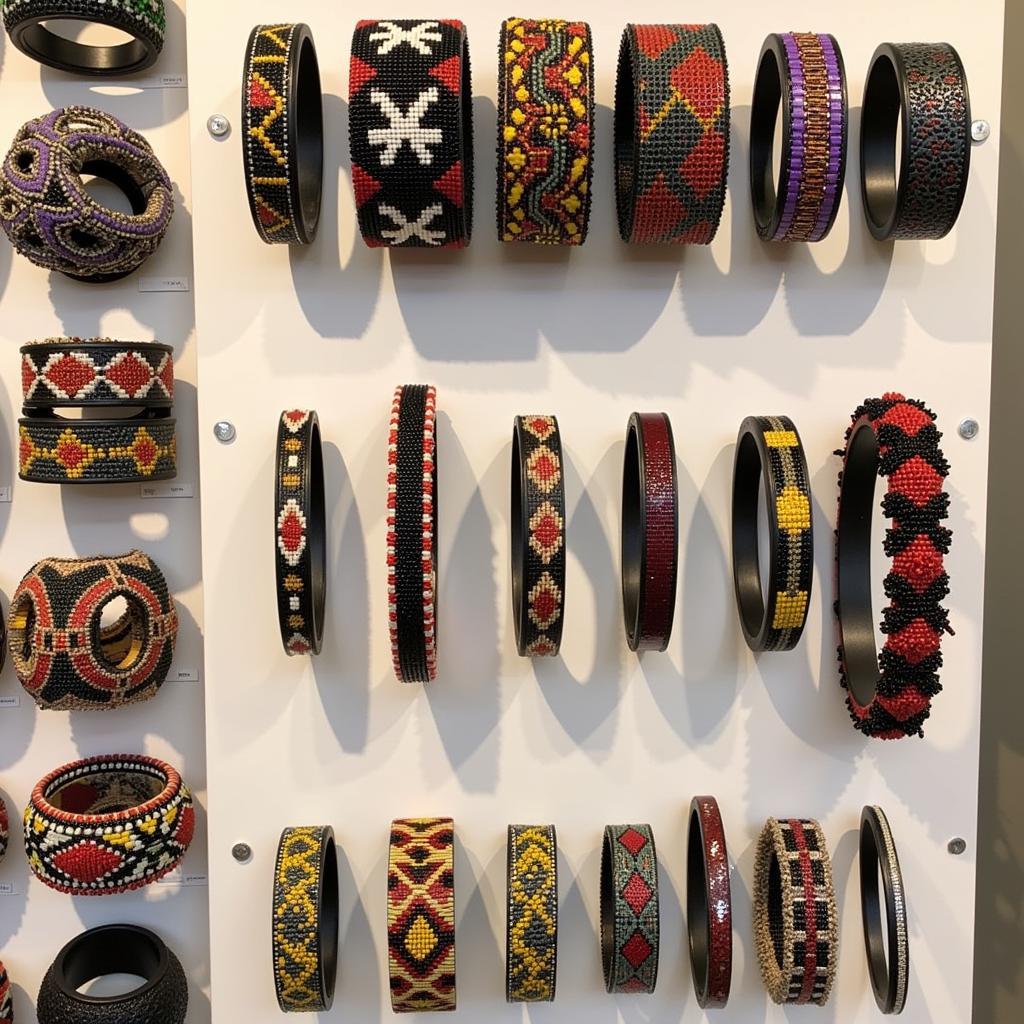African Dots on Face Meaning: Unraveling the Stories Behind the Symbols
For centuries, communities across the African continent have adorned themselves with various forms of body art. From intricate scarification patterns to elaborate headdresses, these embellishments are not merely decorative; they are powerful expressions of identity, heritage, and social standing. Among the most fascinating of these traditions is the practice of applying dots on the face, a seemingly simple act imbued with profound cultural significance.
 African woman with face dots participating in a traditional ceremony
African woman with face dots participating in a traditional ceremony
Deciphering the Language of Dots
Unlike standardized symbols found in some cultures, the meaning of African face paint dots varies significantly across different ethnic groups and geographical locations. Each community possesses its own unique lexicon of dots, each pattern telling a story as captivating and diverse as the continent itself.
Social Status and Lineage
In many African cultures, dots serve as visual markers of social hierarchy. The size, color, and placement of the dots can instantly convey an individual’s lineage, clan affiliation, or position within the community. For instance, in some communities, a single dot on the forehead might denote leadership, while a cluster of dots along the cheekbones could signify membership in a particular family group.
Ritualistic and Spiritual Significance
Dots often play a crucial role in rituals and spiritual practices. Among some ethnicities, dots are applied during rites of passage, such as birth, puberty, marriage, and death. These markings may serve as a symbolic connection to ancestors, deities, or the spirit world.
 A young man with red and white dots on his face participating in a ritual
A young man with red and white dots on his face participating in a ritual
For example, the Himba people of Namibia use a mixture of red ochre and butterfat to create intricate dot patterns, believing that the color red represents the earth and the blood of their ancestors. These markings are an integral part of their daily lives and spiritual beliefs.
Beyond Aesthetics: Dots as Communication
African community tattoos, including facial dots, can act as a powerful means of non-verbal communication. Just as a raised eyebrow or a smile conveys emotion, the arrangement of dots on an individual’s face can communicate a range of messages, including:
- Marital Status: In some communities, married women might adorn themselves with specific dot patterns to signal their availability or unavailability to potential suitors.
- Emotional State: Certain dot arrangements might be used to express grief, joy, anger, or other emotional states.
- Physical Prowess: Among some warrior cultures, dots might signify bravery, strength, or the number of enemies vanquished in battle.
The Enduring Legacy of a Timeless Tradition
While the practice of applying dots on the face is deeply rooted in tradition, it remains a vibrant and evolving aspect of African culture. In today’s world, these markings continue to serve as a powerful symbol of cultural pride and identity, connecting contemporary generations to the rich tapestry of their ancestral past.
FAQ: Unmasking the Mysteries of African Face Dots
1. Are the dots permanent or temporary?
The permanence of the dots varies depending on the materials used and the cultural context. Some communities utilize natural pigments that fade over time, while others employ techniques that result in permanent markings.
2. Can anyone wear these dots?
Respect for cultural traditions is paramount. While appreciating the beauty of this practice is encouraged, it’s essential to remember that these markings hold deep cultural and spiritual significance for specific communities.
3. Are there specific colors and their meanings?
Yes, colors often hold symbolic meaning. For instance, red might symbolize blood, life, or power, while white might represent purity or spirituality. However, the specific interpretations vary across different cultural groups.
4. Where can I learn more about the specific dot patterns of a particular African culture?
Further research into the specific ethnic group and their artistic traditions is recommended. Ethnographic museums, academic journals, and reputable online resources can provide valuable insights.
5. Is this tradition facing extinction?
While globalization has impacted traditional practices, many communities are actively working to preserve and revitalize their cultural heritage, including the art of facial dot application.
Need More Information?
If you need more information, please contact us:
Phone Number: +255768904061
Email: kaka.mag@gmail.com
Or visit us at: Mbarali DC Mawindi, Kangaga, Tanzania.
Our customer service team is available 24/7.



